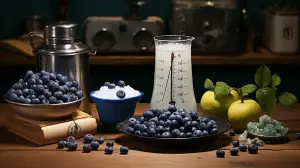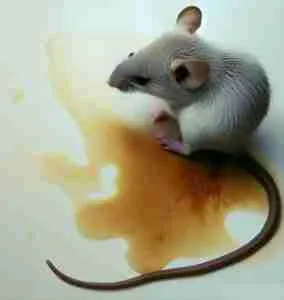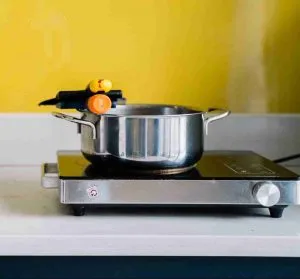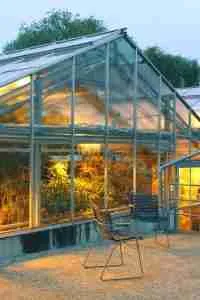Contents
ToggleKey Takeaway:
- Tomato leaf curling can be caused by tough growing conditions: Factors such as extreme temperatures, insufficient watering, and poor soil quality can lead to leaf curling in tomato plants. It is important to provide optimal growing conditions to prevent this issue.
- Excessive pruning can contribute to leaf curling in tomatoes: Over-pruning tomato plants can disrupt their natural growth patterns and put stress on the plant, leading to curling or twisting of the leaves. Proper pruning techniques should be followed to avoid this problem.
- Transplant shock can result in tomato leaf curling: When tomato plants are transplanted, they may experience shock due to changes in their environment. This shock can manifest as leaf curling. Gradual acclimation and proper care during transplantation can minimize transplant shock.
- Weed killers can negatively impact tomato leaves: The use of certain weed killers or herbicides near tomato plants can cause damage to the leaves, leading to curling or distortion. Care should be taken to avoid spray drift or direct application onto tomato foliage.
- Tomato diseases can contribute to leaf curling: Various tomato diseases, such as viral infections or fungal diseases, can cause leaf curling as a symptom. Early detection, prevention, and treatment of these diseases are essential to maintain healthy tomato plants.
Introduction: Understanding the Issue of Tomato Leaf Curling
Tomato leaf curling is a concerning issue that many gardeners and plant enthusiasts encounter. This leaf curling phenomenon has left them puzzled, seeking answers to understand the cause behind it. To shed light on this matter, it is important to delve deep into the intricate details of this perplexing situation. To get a broader understanding of how plants grow, read more here.
Tomato leaf curling can be attributed to various factors, including environmental conditions, pest infestations, and nutritional deficiencies. These factors can disrupt the normal growth and development of tomato plants, leading to leaf curling as a visible symptom. It is crucial to identify the underlying cause accurately to implement appropriate measures and ensure the well-being of the plants.
In addition to the commonly mentioned factors, there are unique and lesser-known details that can contribute to tomato leaf curling. For instance, excessive exposure to intense sunlight can result in leaf curling. The high temperatures, coupled with inadequate moisture, can cause stress to the plants, prompting them to curl their leaves as a defense mechanism. This highlights the importance of providing optimal growing conditions to prevent leaf curling.
To illustrate the impact of tomato leaf curling, let’s consider a true story. A diligent gardener named Sarah diligently cared for her tomato plants, ensuring they received ample water, sunlight, and nutrients. However, despite her efforts, one day she noticed the leaves of her beloved tomatoes curling. Alarmed, she sought out expert advice and discovered that an aphid infestation was the cause. With the guidance of professionals, Sarah promptly addressed the issue, treating and protecting her plants from further damage.
The Impact of Tough Growing Conditions on Tomato Plants
The challenging conditions that tomato plants face can have a significant impact on their growth. These adverse circumstances can include factors such as extreme temperature variations, inadequate sunlight, insufficient water, and nutrient deficiencies. These tough growing conditions can cause tomato plant leaves to curl. This curling can serve as a visible indication that the plants are struggling to cope with their environment.
Furthermore, the curling of tomato leaves is often accompanied by other symptoms such as stunted growth, yellowing of the leaves, and wilting. These signs further demonstrate the detrimental effects of tough growing conditions on tomato plants. The leaves curl as a natural response to stress, as the plants try to conserve moisture and protect themselves from excessive exposure to the elements.
In addition, the curling of tomato leaves can also be caused by pests or diseases, such as aphids or leaf curl virus. These factors can exacerbate the impact of tough growing conditions and make it even more challenging for the plants to thrive.
Overall, it is essential to recognize and address the impact of tough growing conditions on tomato plants. By understanding the signs of stress, such as the curling of leaves, and taking appropriate measures to mitigate these challenges, gardeners can help their tomato plants thrive and achieve their full potential.
The Effects of Excessive Pruning on Tomato Plants

Excessive pruning can also have detrimental effects on tomato plants. Over-pruning can lead to curled leaves, which is a sign of stress and nutrient deficiency. This can hinder the plant’s ability to photosynthesize and produce energy for growth and fruit development. In addition, excessive pruning can leave the plants vulnerable to pests and diseases.
It is important to strike a balance when pruning tomato plants, removing only necessary branches to promote airflow and prevent overcrowding.
Pro Tip: Regularly monitor your tomato plants and only prune when necessary to avoid excessive stress and promote healthy growth.
Transplant Shock and its Influence on Tomato Leaf Curling
Excessive translational movements and their effects on the curling of tomato leaves are governed by transplant shock. Understanding the impact of transplant shock on the phenomenon is crucial in managing tomato crops.
- Transplant shock triggers physiological stress in tomato plants, leading to leaf curling.
- During the early stages of transplantation, the disruption to the root system can disturb the balance of water and nutrients uptake, resulting in leaf curling.
- Transplant shock-induced changes in hormone levels may cause abnormal leaf growth, further contributing to leaf curling.
- Inadequate acclimatization to new environmental conditions after transplantation can also influence tomato leaf curling.
Additionally, variations in humidity, temperature, and light intensity contribute to this phenomenon. The interplay of these factors may exacerbate the effects of transplant shock on tomato leaf curling.
The Impact of Weed Killers on Tomato Leaves
Weed killers can have adverse effects on tomato leaves, causing them to curl. These products contain chemicals that can disrupt the normal growth and development of tomato plants. The impact of weed killers on tomato leaves can result in physiological changes, such as curling and distortion. This can hinder photosynthesis and overall plant health, leading to reduced yields and poor fruit quality.
It’s important to use weed control products carefully and follow instructions to minimize their impact on tomato leaves. Consider using alternative methods of weed control, such as manual pulling or mulching, to avoid potential damage to tomato plants. If tomato leaves do show signs of curling, it’s important to identify the cause and take appropriate action to prevent further damage.
Seek advice from local agricultural extension services or horticulture experts for effective weed management strategies that can minimize the impact on tomato leaves. By being proactive and taking necessary measures, you can ensure the healthy growth and productivity of your tomato plants. Don’t miss out on the opportunity to have thriving, lush tomato plants by neglecting the impact of weed killers on their leaves.
Understanding Tomato Diseases and Their Relationship to Leaf Curl
Tomato leaf curl can be caused by various diseases that affect tomato plants. Understanding these diseases and their relationship to leaf curl is crucial for effective management and prevention strategies. By analyzing the specific symptoms exhibited by the plants, such as curling leaves, gardeners and farmers can identify the underlying diseases responsible for this condition.
This knowledge allows them to implement appropriate measures, such as using disease-resistant tomato varieties, practicing crop rotation, providing adequate nutrition, and implementing proper pest and weed management techniques.
It is important to closely monitor tomato plants for any signs of leaf curl and take proactive steps to address the underlying diseases in order to ensure healthy and fruitful tomato plants.
Conclusion: Taking Action to Save Your Tomato Plants
To ensure the well-being of your tomato plants, follow these 6 simple steps:
- Identify the Problem: Observe the curling leaves and identify the possible causes.
- Check for Pests: Inspect the plants for any signs of pest infestation, such as aphids or spider mites.
- Provide Adequate Watering: Maintain consistent watering, ensuring the soil is evenly moist but not saturated.
- Optimize Sunlight Exposure: Make sure your tomato plants receive sufficient sunlight, aiming for at least 6-8 hours a day.
- Implement Proper Support: Stake or cage the plants to provide support and prevent the leaves from curling under their own weight.
- Apply Appropriate Fertilizer: Use a balanced fertilizer to provide the necessary nutrients for healthy growth.
In addition to these steps, it’s important to consider other factors that may affect the curling of tomato leaves. By promptly addressing any issues and maintaining a vigilant approach, you can ensure your tomato plants thrive and yield a bountiful harvest. For those interested in managing pests in their gardens, you might find this article on plants that repel ticks beneficial.
Five Facts About Why Tomato Leaves Are Curling:
- ✅ Less than ideal growing conditions, such as hot weather and lack of moisture, are the most common cause of tomato leaf curl. (Source: Iowa State University)
- ✅ Tomato plants curl their leaves as a self-defense mechanism in response to hot, dry conditions. (Source: Iowa State University)
- ✅ Excessive pruning can cause tomato leaves to curl, as the sudden loss of energy-generating leaves triggers a stress response. (Source: Megan Hughes)
- ✅ Transplant shock, caused by moving seedlings or young plants into the garden, can lead to tomato leaf curl as a self-defense mechanism. (Source: Megan Hughes)
- ✅ Herbicides, such as 2,4-D or dicamba, can cause tomato leaves to curl when they drift onto the plants or when contaminated compost or mulch is used. (Source: Megan Hughes)
FAQs about Why Are My Tomato Leaves Curling
Why are my tomato leaves curling?
There are several possible reasons why your tomato leaves may be curling. Some common causes include heat stress, improper watering practices, herbicide exposure, use of contaminated compost, and viral diseases.
How does heat stress cause tomato leaf curl?
During hot and dry conditions, tomato plants may experience leaf curl as a self-defense mechanism. The curling helps reduce water loss and protects the plant from further heat stress. Providing adequate moisture and shade can help alleviate this issue.
What can I do to prevent tomato leaf curl from heat stress?
To prevent tomato leaf curl caused by heat stress, ensure that your plants receive sufficient water, ideally 1 inch per week. Mulching around the plants can also help retain soil moisture. Providing temporary shade during extreme heat can further protect your plants.
Can excessive pruning lead to tomato leaf curl?
Yes, excessive pruning can cause tomato leaf curl. When too much foliage is removed, the plant may respond with stress-induced curling of the remaining leaves. It is best to avoid excessive pruning and allow the plant to recover naturally.
How can herbicides lead to tomato leaf curl?
Herbicides, such as 2,4-D or dicamba, can cause leaf curl if they drift onto tomato plants. These chemicals affect foliage growth and may even lead to the death of the plants. Contaminated compost or mulch containing herbicides can also cause leaf curl when used in the garden.
What should I do if my tomato plants are affected by herbicides?
If your tomato plants are affected by herbicides, there is no immediate cure. Some plants may overcome the effects and still produce a crop, while others may die without fruiting. To prevent herbicide exposure in the future, avoid using weed killers near tomato plants and ensure that your compost and mulch are from reputable sources.
Are viral diseases a possible cause of tomato leaf curl?
While not very common, viral diseases can cause tomato leaf curl. Infected plants may display twisting and twining new growth, along with curling of individual new leaflets. Unfortunately, there is no cure for viral diseases in tomatoes, and affected plants should be removed to prevent further spread.
Additional Reading
If you’re delving into the mystery of curling tomato leaves, it’s beneficial to expand your knowledge on various aspects of gardening and plant care. The following resources can offer supplementary insights:
- Companion Plants for Squash: Enhance the vitality and yield of your squash by introducing them to their perfect plant partners. Learn how strategic planting can deter pests and promote growth.
- What Part of the Green Onion Do You Use?: A staple in many kitchens, the green onion is versatile and flavorsome. Explore the parts you can use and how they can flavor your dishes.
- How Long Do Pansies Last?: Admire the world of pansies, understanding their lifespan and the best care practices to keep them blooming longer.
- Is Lemon Grass a Perennial?: Get familiar with lemongrass, its growth habits, and whether you can expect it to return year after year in your garden.
- Do Tulips Come Back?: Delve into the life cycle of tulips, one of the most celebrated spring bulbs, and discover if they’ll grace your garden annually.























































